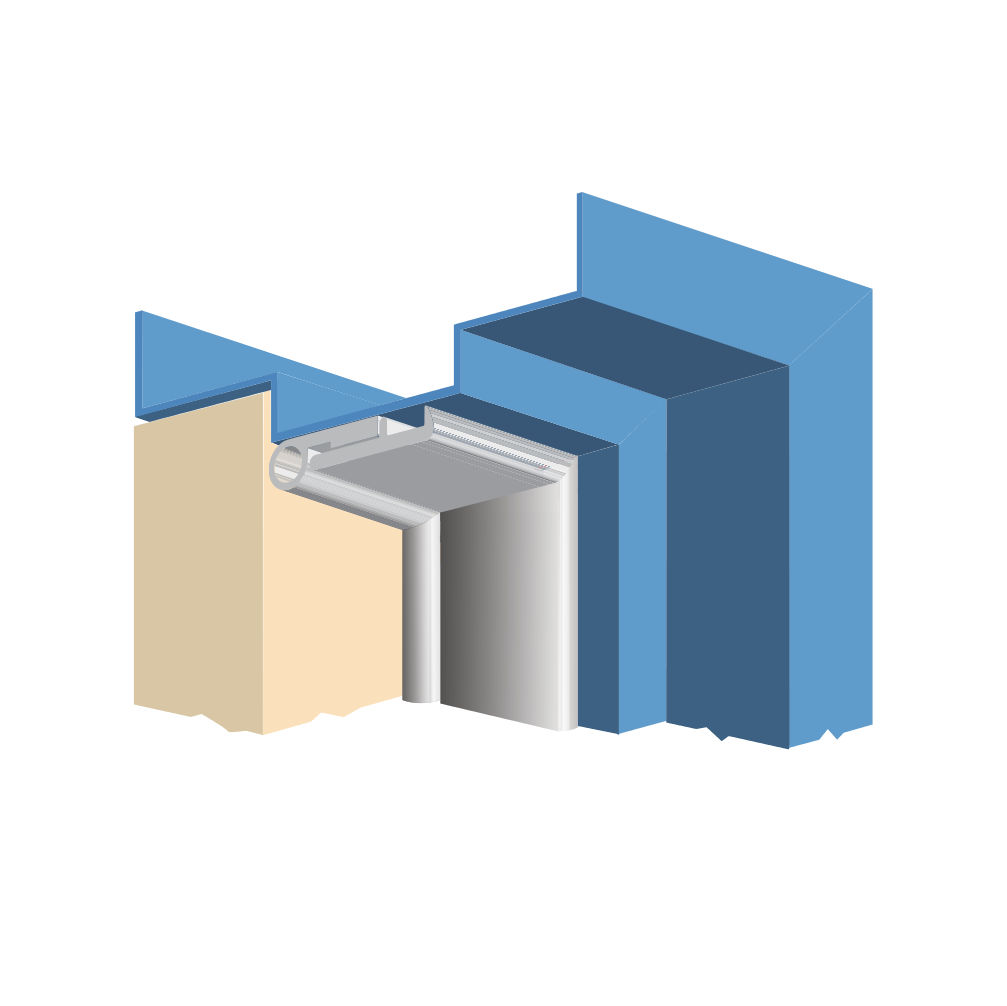Last week, I updated the Decoded article on smoke door requirements of the IBC, and I was asked to update this NFPA 101 post as well. There were not many changes in the 2021 edition of the Life Safety Code, but here is the revised post.
~~~
With the increased focus on fire door assemblies, particularly in health care facilities, I’m receiving numerous questions on this topic. The most recent, received from a fire door assembly inspector, is…
Which door openings are required to have gasketing, according to NFPA 101 – The Life Safety Code?
Since the Centers for Medicare and Medicaid Services (CMS) have adopted the 2012 edition of NFPA 101, that’s the edition I referred to in order to answer this question. [Note: I have updated the information below based on the 2015-2021 editions of NFPA 101.] I have previously written articles addressing the requirements of the International Building Code (IBC), so if the IBC is the applicable code, refer to this post.

Gasketing is typically required when a door assembly must limit air infiltration to a maximum value stated in the code when tested in accordance with UL 1784 – Air Leakage Tests of Door Assemblies.
Similar to the IBC, NFPA 101 does not specifically mandate gasketing for fire doors or smoke doors. Instead, these model codes require some doors to limit the amount of air infiltration to a certain level (3.0 cubic feet/minute/square foot of door opening at 0.10 in. water column for both the ambient and elevated temperature tests) when tested in accordance with UL 1784 – Standard for Air Leakage Tests for Door Assemblies. That’s a mouthful, but the key is to start by looking for a reference to UL 1784.
The 2012 edition of NFPA 101 and subsequent editions through 2021 refer to UL 1784 in Section 8.2.2.4, stating that where door assemblies are required by other sections of the code to be smoke leakage-rated in accordance with section 8.2.2.4, they are required to limit the air infiltration to the level stated above, when tested in accordance with UL 1784. This section also requires these door assemblies to be installed in accordance with NFPA 105 – Standard for Smoke Door Assemblies and Other Opening Protectives, and for the assemblies to be inspected at least annually.
The next step is to look in other sections of the code for references to Section 8.2.2.4 and smoke-leakage-rated assemblies.
I found only two references in each of the 2012-2021 editions of NFPA 101 that would require smoke leakage-rated assemblies in accordance with Section 8.2.2.4:
7.2.12.3.4.1 – New fire door assemblies serving an area of refuge shall be smoke leakage-rated in accordance with 8.2.2.4.
8.5.4.2 – Where required by Chapters 11 through 43, doors in smoke barriers that are required to be smoke-leakage–rated shall comply with the requirements of 8.2.2.4.
However, I didn’t find any occupancy chapters which currently require doors in smoke barriers to be smoke-leakage-rated, so that brings us back to one location – new fire door assemblies serving an area of refuge would require gasketing in order to limit the air infiltration to the level stated in the code.
Annex A of NFPA 101 further clarifies that “Gasketing of doors should not be necessary to achieve resistance to the passage of smoke if the door is relatively tight-fitting.” This language (or similar) appears in sections A.18.3.6.3.1/A.19.3.6.3.1 in reference to corridor doors in new and existing health care facilities, in addition to section A.8.4.3.4 in reference to fire door assemblies. But read on…there’s more.
What about NFPA 80 and NFPA 105? NFPA 80 does not reference UL 1784, but states in Annex A, paragraph A.9.3, “Where door assemblies are used for smoke or draft control, gasketing or reduced clearances might be necessary,” referencing NFPA 105. Although NFPA 105 does require smoke door assemblies to limit the airflow to the stated level when tested in accordance with UL 1784, we need to go back to NFPA 101 and look for locations that are required to be smoke doors installed in accordance with NFPA 105.
Searching NFPA 101 for references to NFPA 105, I found 3 more locations where doors are required to limit air infiltration to the stated level when tested in accordance with UL 1784:
- New door assemblies opening into a vestibule (if provided) that are part of a smokeproof enclosure (7.2.3.4)
- New door assemblies in horizontal exits (7.2.4.3.9)
- Elevator lobby doors in occupant evacuation elevator shaft systems (2012: 7.14.8.7, 2015: 7.14.9.7, 2018 and 2021: 7.15.9.7)
The bottom line is that there are actually very few locations where NFPA 101 requires doors to have smoke gasketing – new fire door assemblies serving an area of refuge, new door assemblies in the vestibule of a smokeproof enclosure, new door assemblies in horizontal exits, and elevator lobby doors in occupant evacuation elevator shaft systems. If anyone finds additional locations or references, please let me know.
Note: If the building was built in accordance with the IBC and doors were required to have gasketing in order to limit air infiltration when tested in accordance with UL 1784, this gasketing should be present and intact when the fire door inspection is conducted. The 2015-2021 editions of the IBC require limited air infiltration and reference UL 1784 for the following locations: elevator lobby doors, doors in smoke barriers in underground buildings and I-3 occupancies (i.e. correctional centers, detention centers, jails, prerelease centers, prisons, and reformatories), and fire door assemblies in corridors and smoke barriers. Refer to this article for more information.
You need to login or register to bookmark/favorite this content.





Leave A Comment